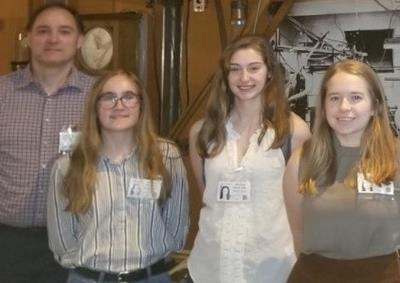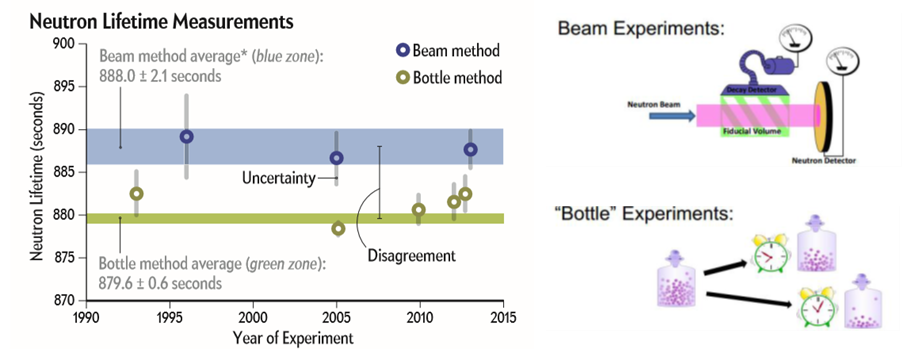UK undergraduates Emily Ballantyne and Rebecca Calvert and WKU undergraduate Sarah Vickers carried out a research project under UK professor Christopher Crawford in summer 2018. Their project was a part of a quest to solve a persistent discrepancy between two different types of measurements of the neutron lifetime, which disagree by over four standard deviations (see  Figure 1 below).
Figure 1 below).
Known as the beam and bottle methods, the former measures the in-flight decay rate normalized by the number neutrons in the beam and the length of the decay region, while the second measures the exponential decay curve as a function time, as neutrons are stored for times comparable to the 15 minute lifetime.
UK is responsible for the design of a new neutron detector, which will study systematic errors while measuring the neutron lifetime to unprecedented precision using the beam method. One source of systematic error is variations of the neutron detection efficiency over the profile of the neutron detector.
Emily, Rebecca, and Sarah set out to design a new detector with more uniform detection efficiency. It was previously thought that the optimal detector would consist of a silicon wafer with a coating of Li-6, which reacts with the neutrons to product energetic alpha and triton particles, and that detectors should be arranged in a circle around the beam at an angle of 30 degrees. Emily, Rebecca, and Sarah initially found a much more uniform detection was obtained by increasing the angle to 35.3 degrees.
Continuing their analysis, they found that the uniformity was further improved by tilting the detectors by 30.20 degrees away from the normal while angling them at 43.40 degrees. Their results were the basis of the following article posted on the arXiv: https://arxiv.org/abs/2010.11250.
They presented their results at a collaboration meeting at the National Institute of Standards and Technology. (While at NIST, they visited the apparatus with which C. S. Wu observed parity non-violation for the first time, pictured above.)

